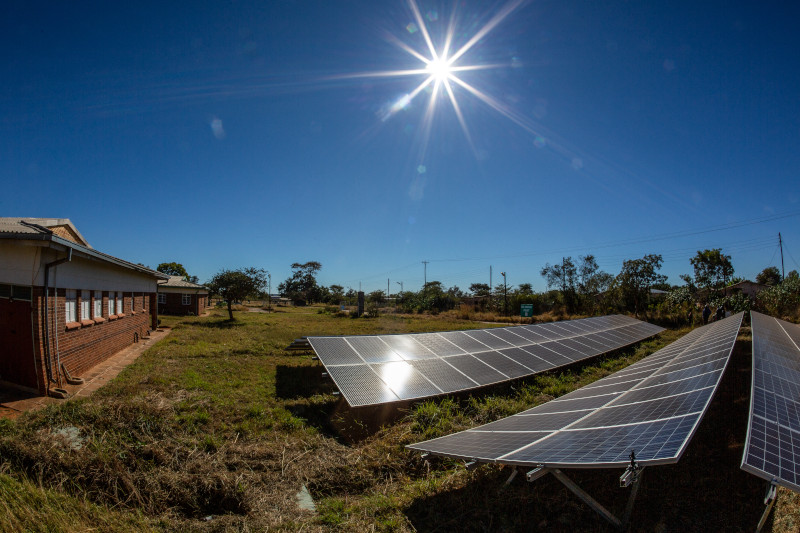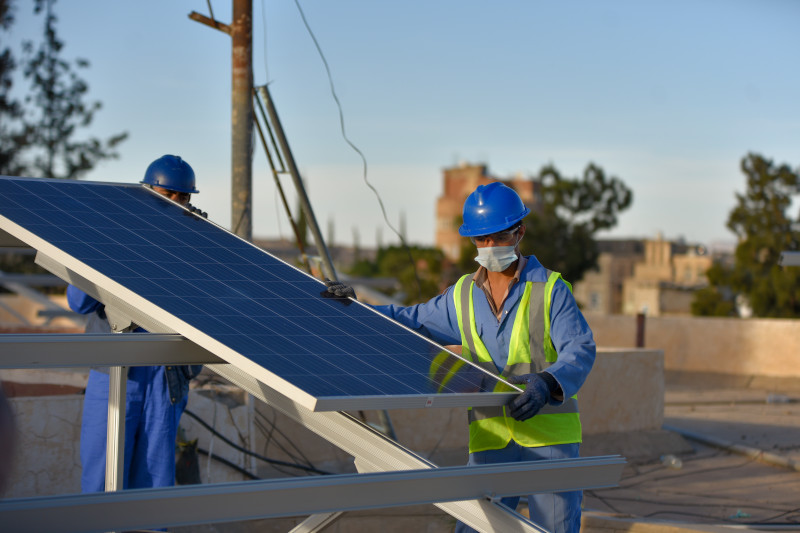Six ways to achieve sustainable energy for all
July 10, 2023

Beyond mere household connections, energy access should encompass livelihoods, productivity, and economic development.
As I sit here in my warm office, the gentle hum of my electric heater serves as a constant reminder of the privilege I enjoy. The glow of my desktop light shines bright as I type these words, one keystroke at a time. In this moment, I am struck by a disconcerting truth – that energy is often taken for granted, a privilege that goes unnoticed.
Despite the remarkable technological progress of our era, including breakthroughs in renewable energy development and the rapid decline in the cost of technologies, millions of people endure constant darkness over dinner time or are burdened by unreliable service. This harsh reality not only impacts individual wellbeing, but also hampers economic progress.
Realizing the targets of Sustainable Development Goal (SDG) 7 – affordable and clean energy for all – has reached an undeniable tipping point. The urgency to confront inequitable energy access can no longer be ignored.
Yet the 2023 SDG 7 tracking report reveals sobering findings. A staggering 675 million people still lack electricity and 2.3 billion don't have access to clean cooking fuels. The African continent, where gaps are the largest, is home to 17 of the top 20 countries with the highest access deficits. Nigeria, the Democratic Republic of Congo, Ethiopia and Tanzania alone account for 253 million people without electricity, 34 percent of the global deficit. These numbers demonstrate the acute energy poverty that exists in Africa, where energy demand is expected to surge rapidly.
In this context, how can we even talk about a global energy transition when a significant portion of the world lacks energy access? A paradigm shift is urgently needed, one that acknowledges the diverse starting points of countries and their existing realities. This should be ambitious enough to capitalize on opportunities for rapid and large-scale energy transformation, promoting cleaner and more efficient technologies.
This shift is even more pressing when we consider the shortfall of developed countries to fulfill their annual commitment of US$100 billion in climate finance. Integrated approaches will be required, as countries must strategically allocate and use resources, while designing programmes that contribute multiple SDGs. This is where UNDP’s portfolio approach becomes crucial. By developing, testing, learning, and scaling interventions that complement one another, the world can achieve progress on many fronts.

The 2023 SDG 7 tracking report reveals sobering findings. A staggering 675 million people still lack electricity and 2.3 billion lack access to clean cooking fuels.
Here I propose a few practical recommendations to ignite a new way of thinking, to support action on SDG 7 and to realize benefits beyond it.
- Broadening our understanding of “energy access”. Beyond mere household connections, energy access should encompass livelihoods, productivity, and economic development. UNDP’s Africa Minigrids Programme exemplifies this philosophy. The programme not only focuses on household electrification but also on strategically enhancing the work of entrepreneurs and companies, and key economic sectors such as education, health, and commerce. By committing to providing clean energy for an additional 500 million people by 2025, UNDP aims to empower livelihoods and stimulate economic growth.
- Ensuring that new energy access – especially to reach the last mile – is clean, and whenever possible, renewable. Energy access can directly contribute to a just energy transition. All of the Nationally Determined Contributions supported through UNDP’s Climate Promise include energy-related targets or policies. In the context of Africa, the region’s carbon emissions, which are less than three percent of global energy-related emissions, presents an opportunity to embark on a new paradigm of development, one that prioritizes energy access and unlocks the continent’s renewable energy potential, while safeguarding the climate.
- Doing more with the same money by designing programmes that accelerate progress across several SDG 7 targets. Progress on electrification can serve as a catalyst for clean cooking in both cities and rural areas. Between 2019 and 2021, the global population with access to electricity increased by 114 million people a year on average. In neighbourhoods where electricity access rates are higher, for instance in cities, this progress could also facilitate clean cooking transitions. Promoting the use of common household appliances could unfold on the back of current electrification efforts. In rural communities, where electrification is not immediately possible, but where biomass use still dominates, energy efficient cooking can also equally contribute to energy efficiency targets. UNDP’s work in Nigeria already shows the benefits of transitioning to energy-efficient biomass stoves for cooking in rural communities and reducing burdens on household economies, health services, and the environment.
- Bringing different actors into the solution space. This means supporting the next generation of leaders and innovators to ensure that they are equipped with the skills to address the complex challenges. We also need to be gender responsive and ensure that women are part of the process at every level. Experiences supported by UNDP in Peru and Yemen have shown the development benefits of engaging women as agents of change through their training as clean energy technicians. Projects in Malawi, Nepal and India have shown that energy access can be a game-changer for women, freeing up their time and opening diverse livelihood opportunities such as education and entrepreneurship, including in the renewable energy value chain.
- Anchoring solutions on inclusive data and digital solutions that prevent the worsening of existing inequalities. National energy planning does not often include local data that specifies community energy behaviours and needs. Data collected at this level can pave the way for inclusive energy transitions, where policies are shaped by local contexts and realities.
- Leveraging political platforms to ramp up global advocacy. This year’s High-Level Political Forum and SDG Summit at the United Nations are critical moments to raise global ambition and commitments. It is a matter of utmost urgency to deliver energy to the millions that still need it.
I look forward to working with UNDP and our partners to seize this opportunity to act now.
Interested to learn more about UNDP’s work on energy access? Visit UNDP’s Sustainable Energy Hub and Climate Promise.

 Locations
Locations